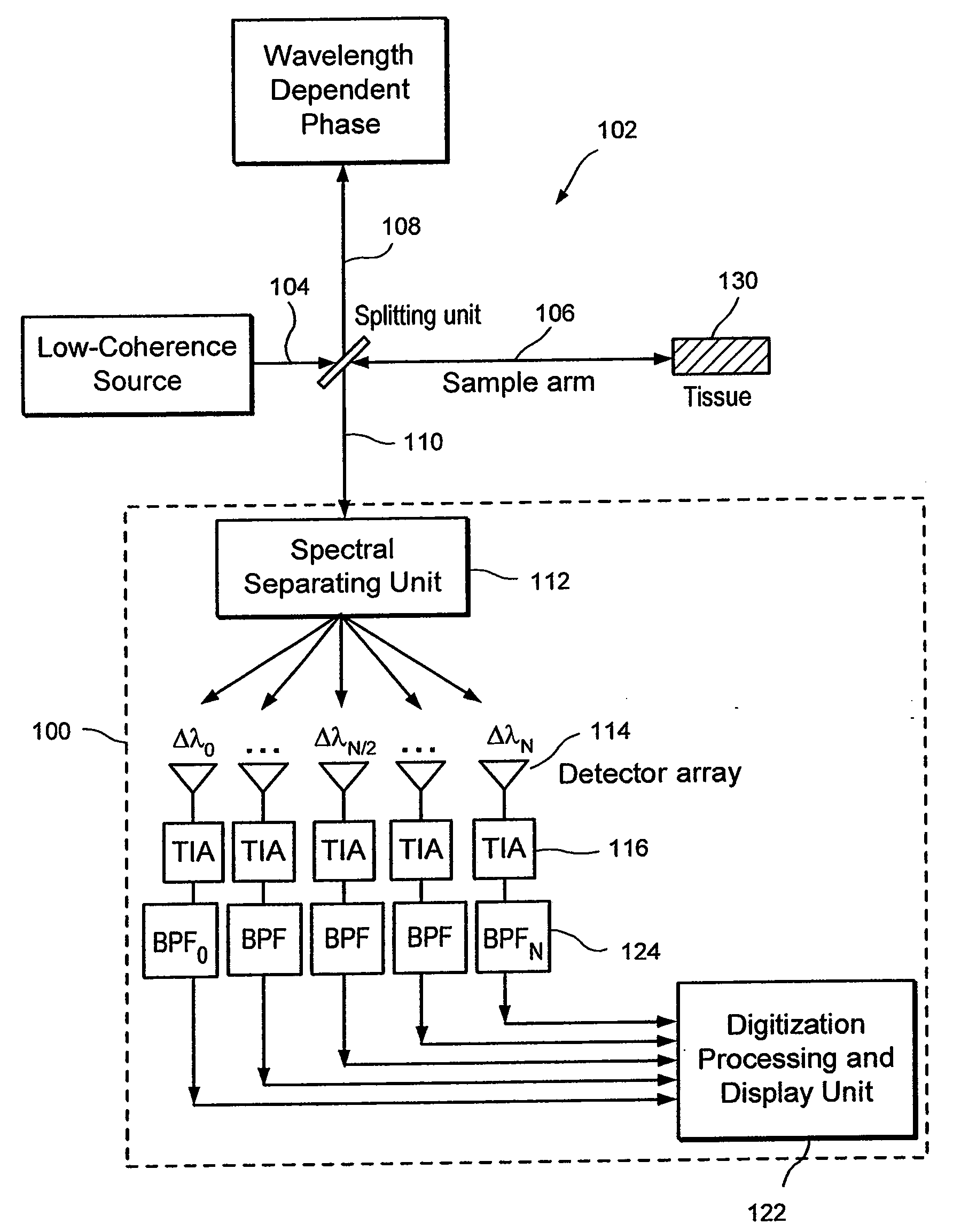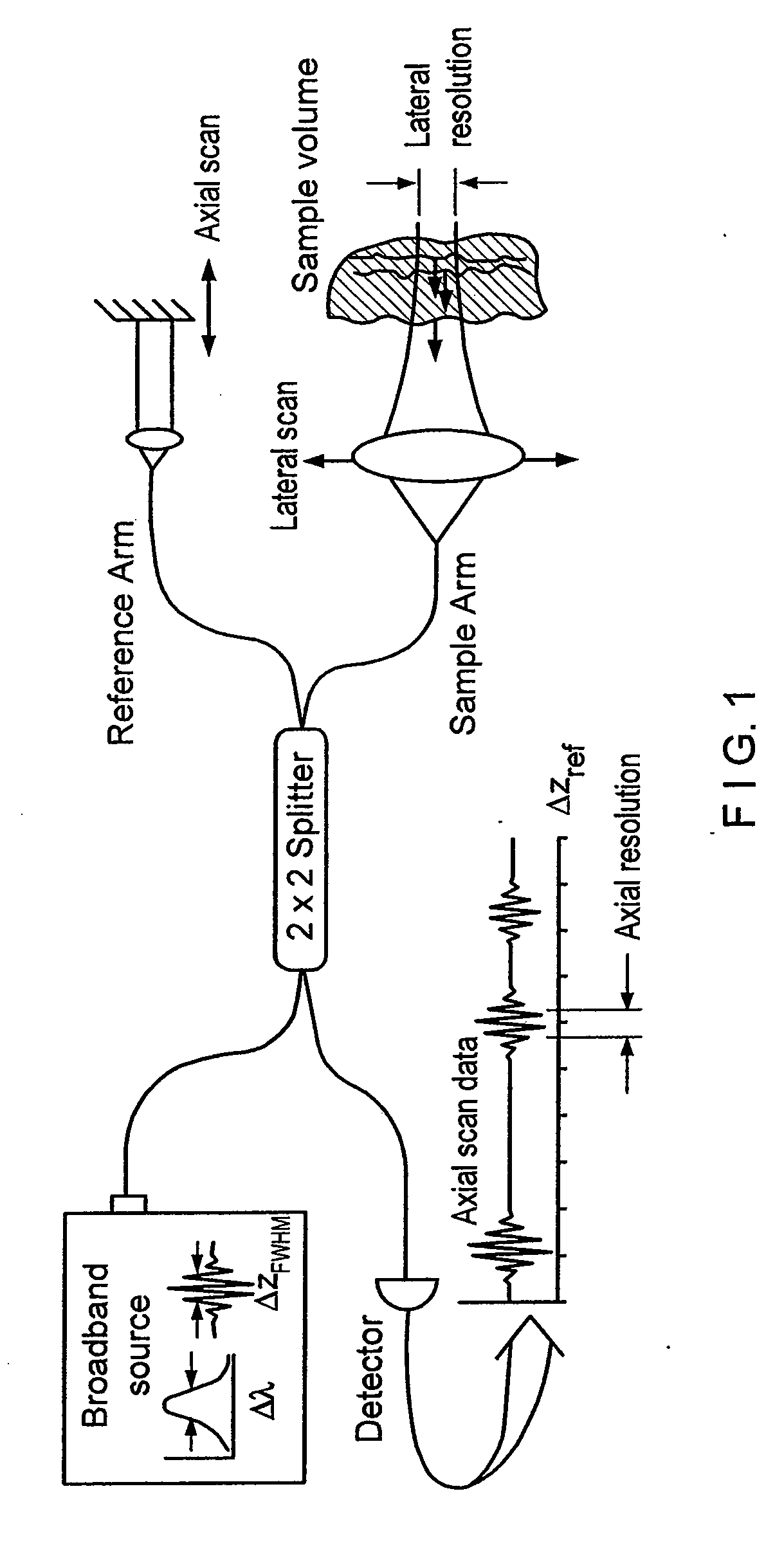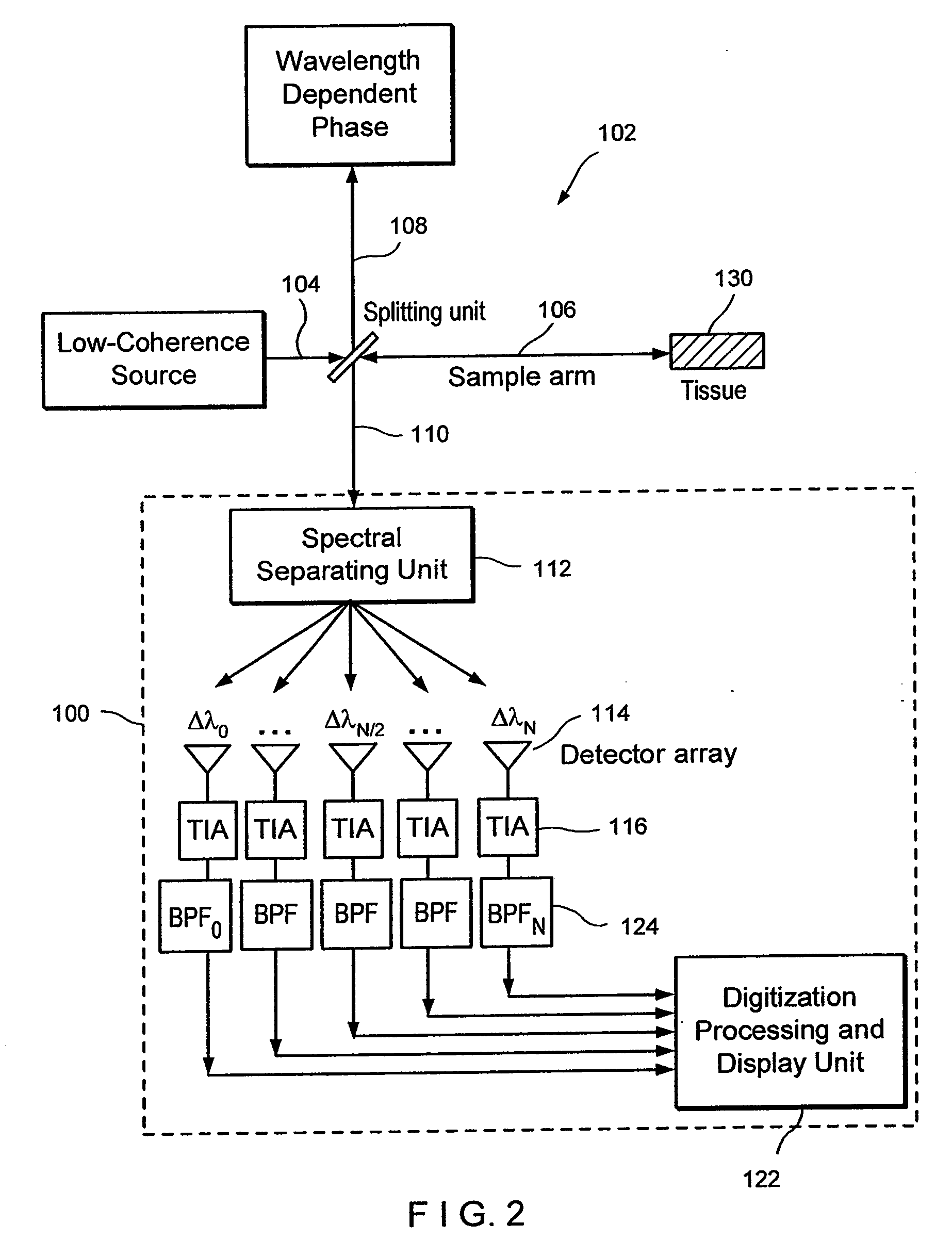Apparatus and method for ranging and noise reduction of low coherence interferometry LCI and optical coherence tomography oct signals by parallel detection of spectral bands
a technology of optical coherence tomography and spectral band detection, applied in the field of apparatus and method for ranging and noise reduction of low coherence interferometry lci and optical coherence tomography oct signals by parallel detection of spectral bands, can solve the problem of the power that is allowed for ophthalmic applications, and achieve the effect of increasing the snr of lci
- Summary
- Abstract
- Description
- Claims
- Application Information
AI Technical Summary
Benefits of technology
Problems solved by technology
Method used
Image
Examples
case b
ike Spectral Bands and the Reconstruction of the Full Depth Range in the Sample Arm from Reduced Reference Arm Scans.
[0065] The following discussion describes the principle of reconstruction of the full depth range in the sample arm from reduced reference arm scans. The procedure will be explained in the case of demultiplexing the spectrum in two spectral bands. The method can be expanded for demultiplexing into many spectral bands.
[0066] The signal at the detector for a single detector system is given by R(t). The depth range in the sample is given by the measurement time T of a single A-line (depth profile) times the group velocity generated by the reference arm delay line,
zrange=vgT
[0067] The smallest resolvable frequency after an FFT is given by 1 / T, which gives a smallest resolvable angular frequency Δω=2π / T. The filter as depicted in FIG. 4 splits the signal into two bands with peaks at ω=ω0, ω0+2Δω, ω0+4Δω, etc. and ω=ω0+Δω, ω0+3Δω, etc., respectively.
[0068] B1(t) and B2 ...
case b2
f Large Number of Spectral Bands
[0073] In the limit of a large number of spectral bands, N≥Lλ,
the optical path length change in the reference arm approaches that of a wavelength, λ. In this limit, only a phase change across one wavelength is needed for reconstructing the entire axial scan over length L. In this case, the reference arm path delay may be accomplished by using any of the aforementioned means for scanning the reference arm delay. Other preferred methods include insertion of an electrooptic modulator, acoustooptic modulator or phase control rapidly scanning optical delay line (“RSOD”) in the reference arm path to impart the path length delay of one wavelength. Also in this case, the wavelength demultiplexing unit does not separate the wavelengths into a comb pattern, but demultiplexes the spectrum into unique optical frequencies, with each frequency detected by a single detector.
Case C. Fourier Domain Reconstruction for Arbitrary Wavelength Patterns
[0074] As opposed...
example
[0078] The method was verified in the lab by the following experiment.
[0079] In the existing OCT system, the shot noise power spectrum as determined from the spectral density due to the reference arm optical power was measured. Then ⅔ of the spectrum from the reference arm was blocked, and experimentally it was verified that the shot noise power spectrum was reduced by a factor of three, thus demonstrating that the shot noise is reduced by a factor of 3 if the spectrum is split in three spectral bands (see FIG. 5). The upper curve (gray dotted line) shows the power spectrum for the OCT signal with one detector. For the lower curve (solid line), the spectrum was limited by ⅓ with a corresponding factor of 3 improvement in signal to noise ratio. This data was generated by experiment, blocking ⅔ of the spectrum in a grating-based double-passed pulse shaping rapidly scanning optical delay line.
[0080] An object with low reflectivity was inserted in the sample arm. Using the full spectr...
PUM
 Login to View More
Login to View More Abstract
Description
Claims
Application Information
 Login to View More
Login to View More - R&D
- Intellectual Property
- Life Sciences
- Materials
- Tech Scout
- Unparalleled Data Quality
- Higher Quality Content
- 60% Fewer Hallucinations
Browse by: Latest US Patents, China's latest patents, Technical Efficacy Thesaurus, Application Domain, Technology Topic, Popular Technical Reports.
© 2025 PatSnap. All rights reserved.Legal|Privacy policy|Modern Slavery Act Transparency Statement|Sitemap|About US| Contact US: help@patsnap.com



